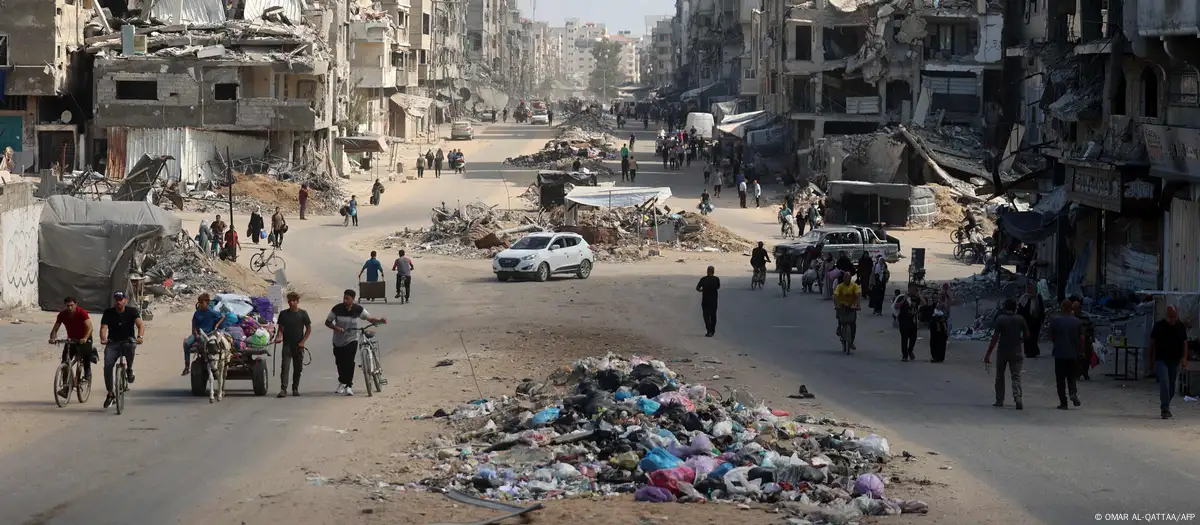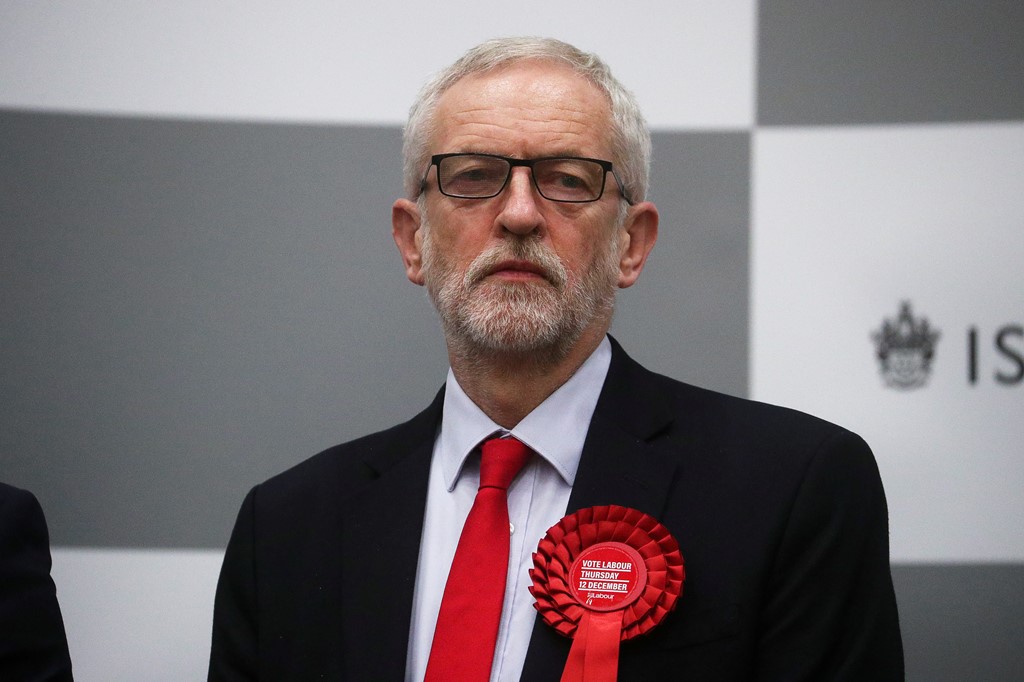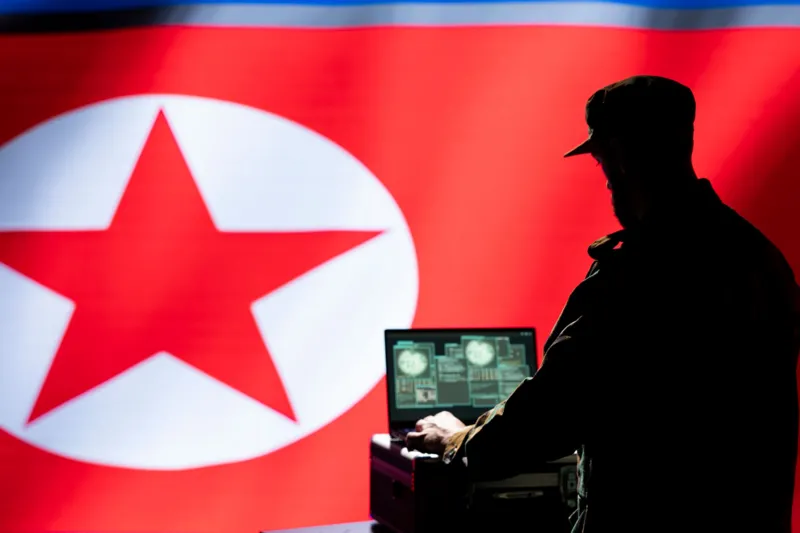Is Israel using 'surrender or starve' strategy in Gaza?
Israel's latest offensive has raised concerns that the country is implementing a "surrender or starve" plan to push Hamas out of northern Gaza. Many residents there are being forcibly displaced.

The Israeli military's latest invasion of Jabaliya in northern Gaza could not be more catastrophic for residents, who have already endured the bombardments and hardship of the Israel-Hamas war, now in its second year.
"It's dangerous here. Nobody can move. It's risky and unsafe. They asked us to leave, but there was no time. All of a sudden, the area was surrounded and under fire," said Mohammed, who didn't want to give his last name, by phone.
Almost two weeks ago, the Israel Defense Forces (IDF) launched a new ground offensive in the Jabaliya refugee camp in northern Gaza and ordered people to leave the area — once again. The IDF said intelligence showed efforts by Hamas, the militant group that runs the enclave, to reestablish itself and regroup in the area.
Palestinians and the United Nations fear that the latest invasion is part of a wider implementation of a "surrender or starve" strategy by Israel to forcibly displace northern residents and seal off northern Gaza, plans Israel denies.
"The Israeli military appears to be cutting off North Gaza completely from the rest of the Gaza Strip," the UN Human Rights Office said in a statement.
Mohammed, 41, said his wife and three children were visiting relatives in neighboring Gaza City when tanks moved in and airstrikes intensified in Jabaliya. He asked them to stay put.
"My neighbors and I stay close to each other, trying to share what is left of food and water. I don't know how long it will last," he said.
The UN's Office for the Coordination of Humanitarian Affairs (OCHA) estimates that 50,000 people were displaced from Jabaliya
over the past two weeks, while others remain stranded in their homes because of heavy fighting around them. According to OCHA, about 84% of the territory is under "evacuation order" by the Israeli military.
Situation in northern Gaza is 'terrifying'
Earlier this month, the Israeli army published a map showing new evacuation orders in several areas of the Gaza Strip, including Beit Hanoun, Jabaliya and Beit Lahiya in northern Gaza. Residents were urged to leave immediately using the Salah al-Din route, a main north-south road, for the designated "humanitarian zone," an overcrowded area lacking basic services in southern Gaza that Israel has also targeted in the past.
But many are weary of being displaced and appear to be seeking shelter within northern Gaza amid increased bombardment and fighting. Aya Tawfik, a volunteer nurse, fled with her siblings and father from Jabaliya to nearby Sheikh Radwan, a neighborhood in northern Gaza City.
"We don't want to go south," Tawfik told DW via text message. "The conditions are harsh. We don't want to live in a tent, and there is bombing and death there, as well."
She described the situation in Jabaliya as "terrifying" as the fighting has also moved closer to the area where her family is now.
"We are staying in a house close to the new evacuation area. We can hear the explosions, the sounds of tanks and drones above us. We don't know if we can stay here or not," Tawfik said, adding that people were constantly on the move in search of safety.
Afraid of never being allowed back home
Gaza's emergency services say they can't move around areas of heavy fighting and have to leave calls for help unanswered.
"It's a great risk for the safety of paramedics and the civil defense to get close to these areas," said Fares Afana, head of the ambulance services in northern Gaza. "There are big numbers of those injured, and there are martyrs (dead bodies) scattered around in the streets."
The OCHA estimates that at least 400,000 people remain in northern Gaza, including Gaza City, the territory's largest city. Those who have remained in northern Gaza despite repeated military orders over the past year to leave for the south have done so for a variety of reasons.
Some are caring for elderly and sick relatives. Others simply refuse to be uprooted from their homes or feel unsafe going anywhere under the constant threat of airstrikes. Many families are separated and scattered throughout Gaza.
Both Mohammed and AYA Tawfik fear that they will never be allowed to return home to northern Gaza. The small territory is now divided by the Netzarim corridor, a new road controlled by the Israeli military that runs from east to west in central Gaza. Residents say the road has made it almost impossible to return to the north.
Gaza's Hamas-run Interior Ministry had instructed civilians to ignore the call to relocate to other areas in the north of the Strip and to avoid heading south. The Israeli military claimed in a statement on Monday that Hamas militants were actively preventing some people from leaving.
What is Israel's 'surrender or starve' strategy?
The military's latest moves and evacuation orders have led to speculation among Palestinians, media and aid organizations that the Israeli government is gradually implementing a "surrender or starve" strategy, also known as the "General's Plan," in northern Gaza.
The plan was proposed by a group of retired senior officers led by retired Major General Giora Eiland, a former national security adviser. According to Israeli media reports, the Israeli Cabinet has recently discussed several options, but it remains unclear whether any have been adopted.
The strategy reportedly aims to force Hamas and its leader, Yahya Sinwar, to surrender by putting pressure on the remaining population in the north. Israel has long accused Hamas and other militant groups of hiding among the civilian population. Under the plan, civilians would be ordered to leave through evacuation corridors in southern Gaza and the northern part would be formally sealed off. Anyone who remained would be considered an enemy combatant, and all supplies would be blocked in a complete siege.
Far-right calls for Israeli resettlement of Gaza
The Israeli left-wing newspaper Haaretz reported this week that senior defense officials have indicated that the political leadership is pushing for the annexation of parts of the Gaza Strip. This comes amid renewed calls by politicians and far-right ministers for the resettlement of Gaza.
Far-right groups have announced a large gathering in the coming days to "train" for the resettlement of Gaza. However, Prime Minister Benjamin Netanyahu has repeatedly denied any plans to allow Israeli settlers into Gaza.
While it is unclear whether the military has adopted any components of the plan in its current invasion, UnN officials have sounded the alarm.
"Since [October 1], Israeli authorities have increasingly cut off northern Gaza from essential supplies," Muhannad Hadi, humanitarian coordinator for the Occupied Palestinian Territory, said in a statement on Sunday. The statement added that the military operations have forced bakeries, medical points and shelters to close, while "hospitals have seen an influx of trauma injuries."
For people such as Tawfik, surviving this latest Israeli incursion is all that matters. "This invasion is harder than the last," Tawfik said. "We have no more energy. We are completely exhausted. We are constantly fighting to stay alive and not to lose our minds."
DW







